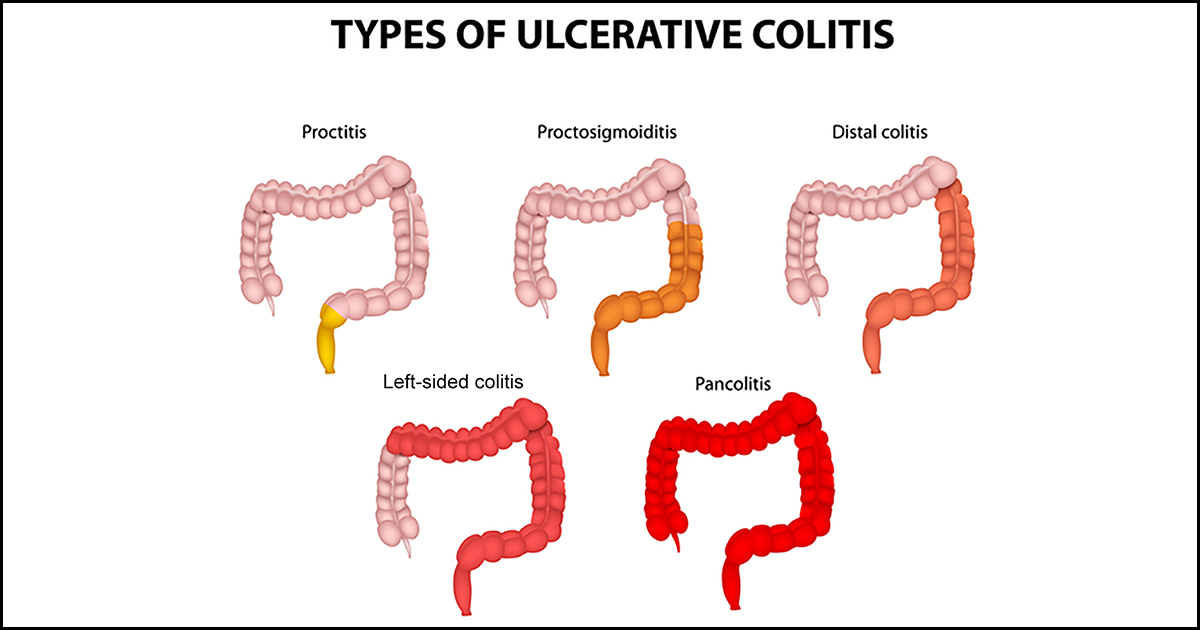10 Facts You Need To Know About Ulcerative Colitis
Types Of Ulcerative Colitis

There are various types of ulcerative colitis based on the location of the inflammation in the colon. Pancolitis or pan-ulcerative colitis usually affects the whole large intestine and results in bloody diarrhea that can be severe, abdominal pain, evident weight loss, and fatigue. With ulcerative proctitis, the inflammation is often located in the area close to the anus and rectum. Rectal pain, bleeding, and a feeling of urgency are the main sign of proctitis and it is considered to be the mildest type of ulcerative colitis. Proctosigmoiditis includes the rectum and sigmoid colon, which is the lower part of the large intestine. Signs of proctosigmoiditis include abdominal pain and cramps, tenesmus which is a sudden and frequent need to move bowels, and fatigue. Left-sided colitis involves the rectum up to the sigmoid and the descending colon. Symptoms are significant weight loss, pain and cramping on the left side of the abdominal, and bloody diarrhea. An uncommon type is acute severe ulcerative colitis which impacts the whole colon and induces fever, loss of appetite, severe pain, bleeding, and frequent diarrhea.
Complications Of Ulcerative Colitis

As ulcerative colitis progresses and if it remains severe, there are possible complications associated with the condition. Potential complications of the disease include osteoporosis (bone loss); severe bleeding; heightened risk of blood clots in arteries and veins; liver disease; perforated colon (hole in colon); severe dehydration; inflammation of eyes and skin; arthritis; toxic megacolon (frequent swelling of the colon); increased risk of colorectal cancer; primary sclerosing cholangitis (inflamed and/or damaged bile ducts). Some medications used to treat ulcerative colitis can cause some complications. For example, the prolonged use of corticosteroid medication which is used to treat UC can lead to osteoporosis and the weakening of the bones. In children and adolescents, failure to grow or poor growth and development can occur as a complication of ulcerative colitis.
